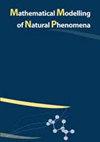准确的中小企业网络风险保费
IF 2.1
4区 数学
Q2 MATHEMATICAL & COMPUTATIONAL BIOLOGY
引用次数: 2
摘要
随着网络攻击变得越来越频繁,网络保险费也在增加,因此需要更好地建模网络风险。Jevtic和Lanchier[20]在基于泊松过程、均匀随机树、键渗透过程和成本拓扑的树型局域网络拓扑假设下,提出了中小企业网络风险总损失分布的动态结构模型。他们的模型假设传染在两个方向上以相同的固定概率通过网络边缘传播,从而忽略了在大多数网络中实现的动态网络安全环境,他们的结果给出了总损失均值的精确表达式,但只有方差的粗略上界。在本文中,我们考虑了他们的渗透模型的一个双向版本,其中传染通过网络边缘传播,以一定的概率向网络的较低级别资产移动,但以另一个概率向网络的较高级别资产移动。此外,我们不同的数学方法导致了总损失的均值和方差的精确表达式,因此保险费的精确表达式。本文章由计算机程序翻译,如有差异,请以英文原文为准。
Exact insurance premiums for cyber risk of small and medium-sized enterprises
As cyber attacks have become more frequent, cyber insurance premiums have increased, resulting in the need for better modeling of cyber risk. Jevtic and Lanchier[20] proposed a dynamic structural model of aggregate loss distribution for cyber risk of small-and-medium-sized enterprises under the assumption of a tree-based local-area-network topology that consists of the combination of a Poisson process, homogeneous random trees, bond percolation processes, and cost topology. Their model assumes that the contagion spreads through the edges of the network with the same fixed probability in both directions, thus overlooking a dynamic cyber security environment implemented in most networks, and their results give an exact expression for the mean of the aggregate loss but only a rough upper bound for the variance. In this paper, we consider a bidirectional version of their percolation model in which the contagion spreads through the edges of the network with a certain probability moving toward the lower level assets of the network but with another probability moving toward the higher level assets of the network. Also, our different mathematical approach leads to exact expressions for both the mean and the variance of the aggregate loss, and therefore an exact expression for the insurance premiums.
求助全文
通过发布文献求助,成功后即可免费获取论文全文。
去求助
来源期刊

Mathematical Modelling of Natural Phenomena
MATHEMATICAL & COMPUTATIONAL BIOLOGY-MATHEMATICS, INTERDISCIPLINARY APPLICATIONS
CiteScore
5.20
自引率
0.00%
发文量
46
审稿时长
6-12 weeks
期刊介绍:
The Mathematical Modelling of Natural Phenomena (MMNP) is an international research journal, which publishes top-level original and review papers, short communications and proceedings on mathematical modelling in biology, medicine, chemistry, physics, and other areas. The scope of the journal is devoted to mathematical modelling with sufficiently advanced model, and the works studying mainly the existence and stability of stationary points of ODE systems are not considered. The scope of the journal also includes applied mathematics and mathematical analysis in the context of its applications to the real world problems. The journal is essentially functioning on the basis of topical issues representing active areas of research. Each topical issue has its own editorial board. The authors are invited to submit papers to the announced issues or to suggest new issues.
Journal publishes research articles and reviews within the whole field of mathematical modelling, and it will continue to provide information on the latest trends and developments in this ever-expanding subject.
 求助内容:
求助内容: 应助结果提醒方式:
应助结果提醒方式:


